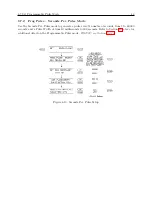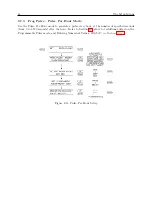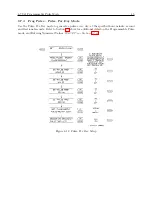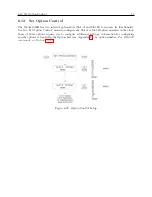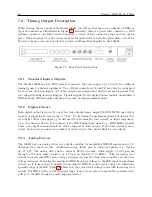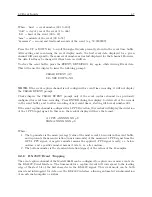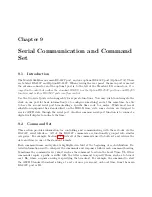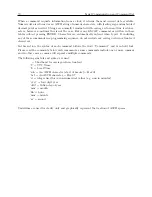
Chapter 7
Timing, IRIG-B and Pulses
7.1
Introduction
This section should help you with understanding, choosing and connecting the correct outputs from
the Model 1088B series clocks to synchronize equipment, such as protective relays. It should also
answer some basic questions, such as:
•
What are the different types of IRIG-B, and how are they different?
•
How do you connect multiple devices to one timing output?
•
How far can you transmit timing signals?
•
What type of cabling and connectors should I use?
Often, questions arise about how many loads the output driver will support, how they should be
connected, and how to connect cabling between the clock and the relay. Certain protective relays,
or digital fault recorders may use a different style connector than available at the clock outputs.
Finally, simple questions about which type of cabling (coax or a twisted pair) is best. This section
should help to answer these common questions.
The steps involved in getting your devices synchronized to the Model 1088B are fairly simple and
should not take long to complete. To expedite the process, make sure that you know:
1. the type of timing signal each piece of equipment requires, and
2. how to enable the equipment to receive the timing signal.
Various methods are used to configure equipment for IRIG-B including setting a physical jumper, or
setup program. Some equipment can auto detect the timing signal, so that nothing else is required
other than connecting the cable.
Summary of Contents for 1088A
Page 4: ...iv ...
Page 6: ...vi ...
Page 18: ...xviii LIST OF FIGURES ...
Page 23: ...1 4 Attaching Rack Mount Ears to 1088A B Series Clocks 3 Figure 1 2 Attaching Rack Mount Ears ...
Page 24: ...4 Unpacking the Clock ...
Page 32: ...12 Front and Rear Panels ...
Page 38: ...18 Connecting Inlet Power Input and Output Signals ...
Page 46: ...26 GPS Antenna and Cable Information ...
Page 48: ...28 Setting Internal Jumpers Figure 5 1 Model 1088B Main Board ...
Page 76: ...56 The Setup Menus ...
Page 112: ...92 Serial Communication and Command Set ...
Page 127: ...B 4 Physical Dimensions 107 Figure B 1 Suggested Mounting of the AS0094500 Surge Arrester ...
Page 128: ...108 Using Surge Arresters ...
Page 145: ...C 5 Option 04 Parallel BCD Output 125 Figure C 4 Option 04 Output Jumper Settings ...
Page 146: ...126 Options List Figure C 5 Option 04 Board Layout and Jumper Locations ...
Page 166: ...146 Options List Figure C 12 Option 17 Board Layout and Jumper Locations ...
Page 187: ...C 16 Option 20A Four Fiber Optic Outputs 167 Figure C 22 Option 20A Jumper Locations ...
Page 194: ...174 Options List Figure C 24 Option 23 Internal Jumper Setup ...
Page 196: ...176 Options List Figure C 25 Option 27 Jumper Locations ...
Page 214: ...194 Options List Figure C 28 Option 29 Connector Signal Locations ...
Page 270: ...250 Options List ...

